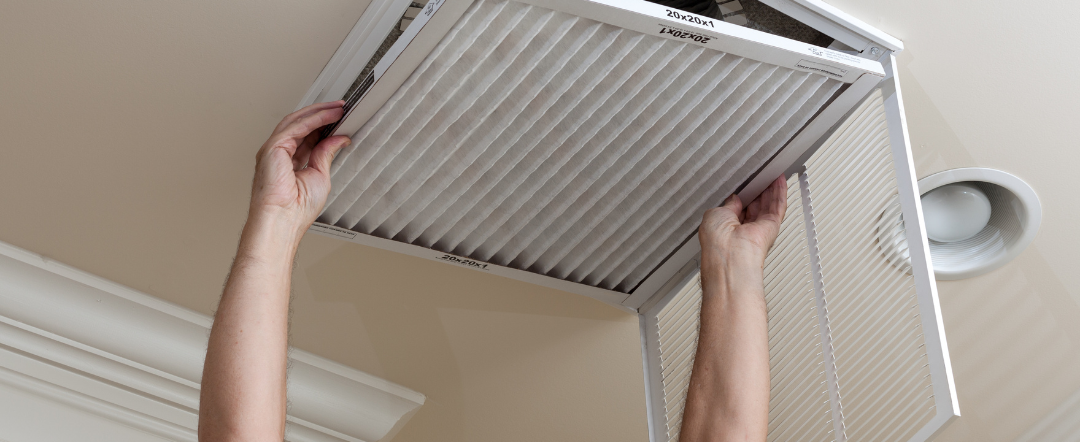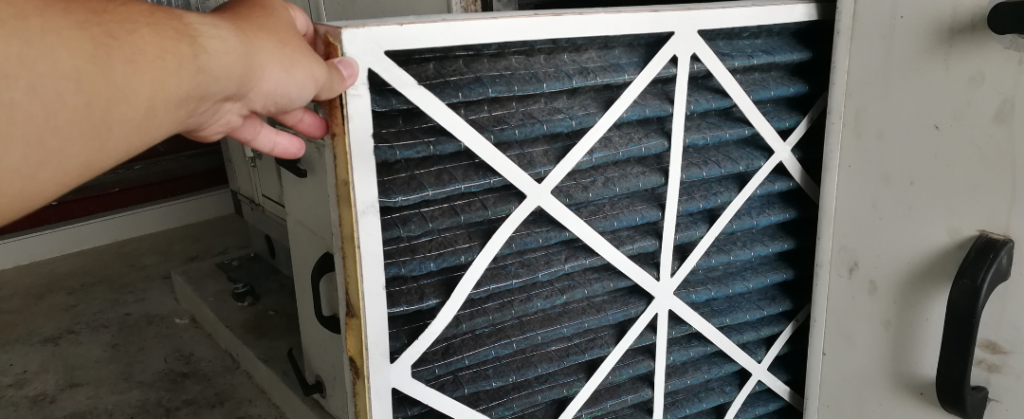How Filters Can Help Improve Your Indoor Air Quality

It’s that time of the year when we pass from cold & flu season right into spring allergy season. It’s an appropriate time to talk about the air filtration in your home. Here, we’ll review different filters and how they can improve the air throughout your home.
Most Common Air Filters In The Home
Return Air Filters
You can find these filters behind the air vent that is located either on your floor, wall, ceiling, or utility closet. They’re typically close to the thermostat.
Furnace Filters
Furnace filters are located in a tray or door on the blower compartment next to the furnace.
Tip: You should change your return filters at least every three months. If you have carpeting, pets, or household members with allergies, you may need to replace them more often. If you can’t see light through the filter, it’s time to change it.
Improving Air Filtration
Now that we’ve discussed where you can find your filters let’s go over the various filters you can use to improve air filtration in your home.
Fiberglass
The 30-day Fiberglass filter is your most basic type. These easy to find filters are the most affordable return filtration option. They’re effective at filtering out large particles like dust and debris. While these filters may not trap smaller particles, it does allow for greater air movement allowing your heating and cooling system to work more efficiently. Since there is less surface space to trap debris and particles, they should be monitored and changed regularly.
Polyester
A polyester filter is made of tightly woven polyester strands, making it much more effective at filtering out smaller particles than fiberglass. The tightly woven strands will restrict airflow and make your heating and cooling system work harder to maintain airflow.
Pleated
A pleated filter looks like an accordion on the inside. These filters are more effective at filtration than fiberglass and polyester options. They have more surface area to capture particles. Like polyester, their tightly woven strands and increased surface area can restrict airflow, making your heating and cooling system work harder.
HEPA
A HEPA filter is great for people with severe allergies or respiratory issues as it is super effective at filtering pollutants. According to the EPA, a HEPA filter “can theoretically remove at least 99.97% of dust, pollen, mold, bacteria, and any airborne particles with a size of 0.3 microns (µm).”
Media
A media filter is an excellent choice if you are looking for extra filtration. A media filter can greatly reduce allergens, pet dander, and odors since it is 3 to 4 times as thick as your typical 1-inch filter. A media filter is installed within a cabinet on the return duct line of your HVAC system. Discuss with your technician if a media filter will work with your system and could be a good solution for filtering the air throughout your home.
Pet dander, dust allergies, pollen, and dirt are a challenge in any home. The right filtration solution can make all the difference in the quality of air you breathe. From fiberglass to HEPA filters, there are many options to choose from. Our technicians are always here help find to find the best solution for your home and your family. contact us today!
Remember, with any filter you choose, it’s important to change them regularly to keep air flowing and avoid costly breakdowns on your heating and cooling equipment from blocked airflow.
If you found this post helpful, check out our other blog posts, subscribe to our YouTube channel, and follow us on social media for more HVAC and plumbing tips, information, and fun!
Air Experts Raleigh Heating and Air is always here for your Heating, Cooling, Indoor Air Quality, Plumbing, and Water Treatment needs. Our award-winning customer service team is available 24/7, or you can easily book an appointment.




